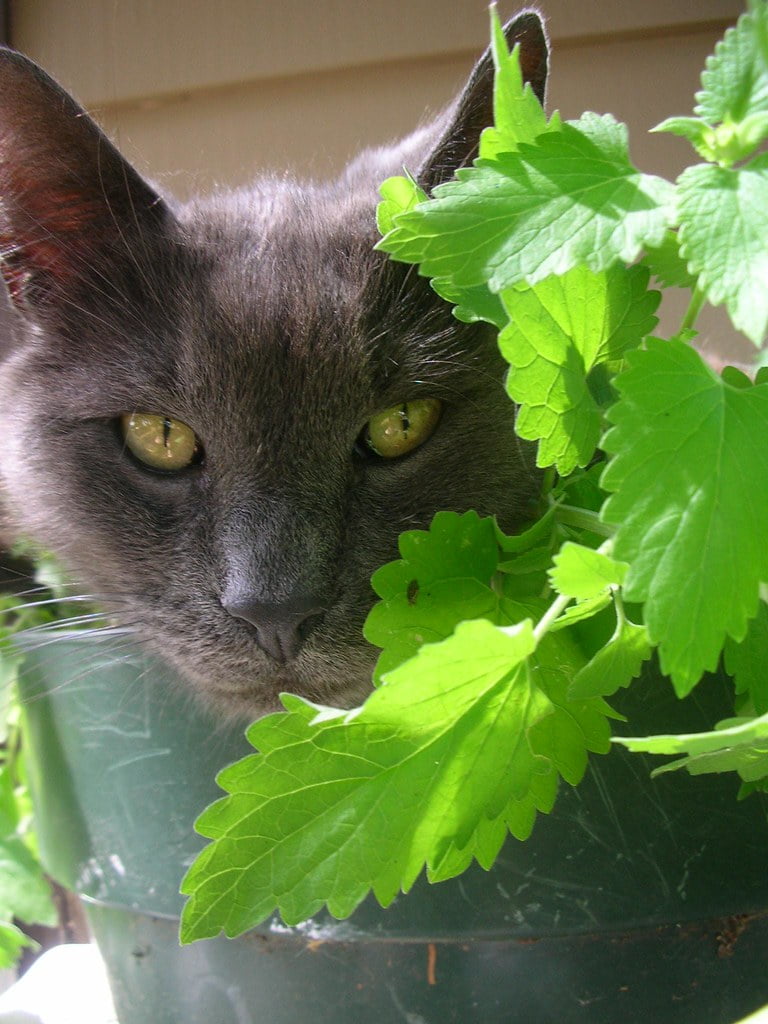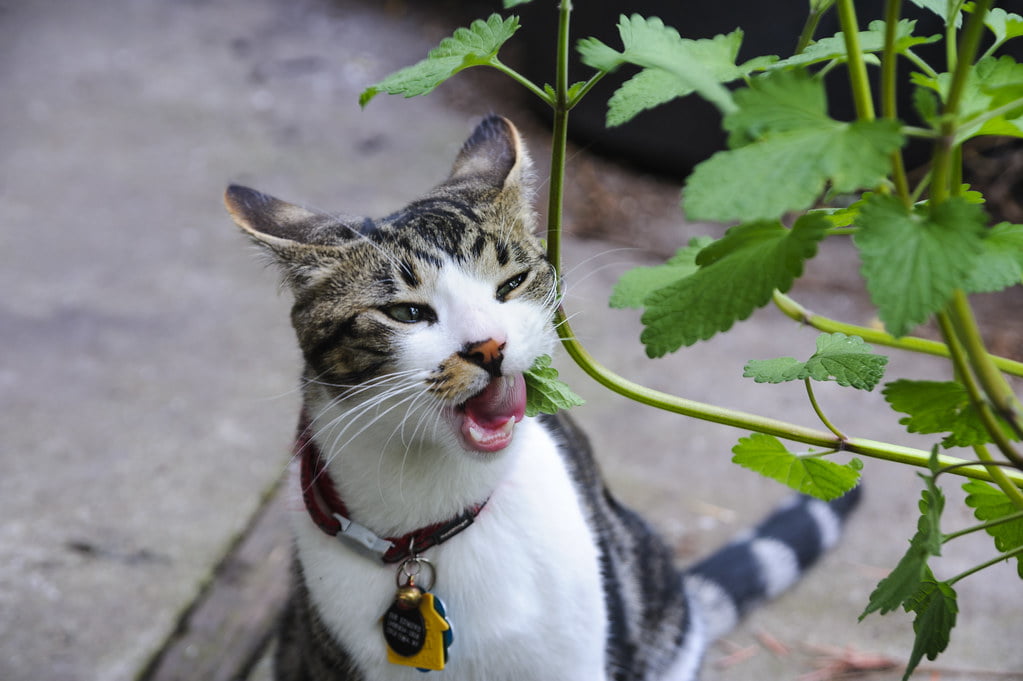Table of Contents
Catnip (Nepeta cataria) is a fragrant herb belonging to the mint family Lamiaceae. This perennial herb is native to parts of Europe and Asia but now grows wild in many parts of the world. Catnip is well-known for its intoxicating effects on cats – hence its common name and popularity. But beyond its feline allure, catnip has various other uses and benefits for people as well.
Overview of Catnip Plant
Catnip is an erect, bushy herb that grows to about 3 feet (1 m) tall. The leaves are heart-shaped with scalloped edges, grayish green in color and grow in opposing pairs along square stems. Clusters of tubular, two-lipped flowers bloom at the stem ends in summer. These flowers can be white, pink, lavender or light purple.
The entire catnip plant has a distinctive, intensely minty aroma. This is because the chemical compounds that give catnip its strong scent are concentrated in the leaves and flowers.
Fun fact: Catnip is named after Nepeta cataria – ‘Nepeta’ being the ancient Roman town where cats were known to love rolling in catnip plants!
Key Features and Uses

Catnip contains a chemical compound called nepetalactone which is what causes euphoric effects in about 50% of cats. When cats inhale this volatile oil, it activates their pheromone receptors and triggers a response similar to sexual arousal. Common behaviors exhibited by cats exposed to catnip include sniffing, chewing, head shaking, rolling, aggressive playfulness and vocalizations.
Aside from being irresistible to felines, catnip has the following uses:
- Natural insect repellent – Catnip oil can keep mosquitoes and other bugs at bay. Topical application provides about 2 hours of protection.
- Stress relief – Catnip has a soothing effect and helps calm the nerves. As a tea, it can ease anxiety and nervous tension.
- Aids sleep – Catnip tea induces sleepiness and is used as a sleep aid. The sedative quality also helps relax muscle tension.
- Digestive aid – Catnip helps expel gas, relieves stomach cramps and helps with diarrhea in children. It also promotes bile flow.
- Pain relief – Catnip’s anti-inflammatory action can relieve headaches, arthritis and joint pain. It may also help reduce migraine symptoms.
- Skin care – Catnip leaves contain tannins and can be used to treat skin irritation like sunburns or bug bites when applied topically.
So in short, beyond just being a ‘cat toy’, the catnip plant has therapeutic properties that can benefit human health.
Growing Catnip Plant
If you have cats, growing some catnip in your garden can provide hours of amusement. Domestic cats react to catnip by rolling, flipping, rubbing, head shaking and displaying strange behavior like they’re in an altered state. Not all cats respond to catnip – genetics determine sensitivity. Kittens under 6 months generally do not react.
Catnip is very easy to grow. It flourishes in most temperate regions with full sunlight and grows well in average, well-drained soil. Key growing tips:
- Start seeds indoors 4-6 weeks before the last frost
- Transplant seedlings 18-24 inches apart after danger of frost is past
- Ensure soil pH is between 6.0 to 7.0
- Water 1 inch per week
- Fertilize monthly with a balanced liquid fertilizer
- Cut back stems by 1/3 after flowering to encourage re-growth
You can harvest leaves and flowers as needed once plants are established. Cutting back actually helps stimulate growth. At the end of the season, trim plants down to 2 inches above soil level. Catnip is a short-lived perennial but often reseeds itself.
If growing indoors, provide lots of sun and well-drained, nutrient rich potting soil. Frequent pruning keeps plants bushy and compact.
Drying and Storing Catnip
You can dry catnip leaves and flowers to preserve aroma, flavor and nutrients for long term use. To dry:
- Cut stems just before flowers bloom
- Gather into small bundles and hang upside down in a warm, dry area
- Once crispy dry, remove leaves and flowers
- Store dried catnip in airtight glass jars out of sunlight for up to 6 months
You can add dried or fresh catnip leaves to herbal teas, soups, stews and sauces. It pairs well with chicken, seafood and vegetables. Its minty flavor brings a refreshing taste to salads, marinades, fruit juices and cold summer drinks.
For cats, dried catnip can be sprinkled over toys or stuffed into sock toys. Use sparingly though – a little goes a long way for cats!
Safety and Side Effects
When consumed as a tea or supplement, catnip is considered safe for most people. But some people may experience side effects like headaches, vomiting or dizziness. Pregnant women should avoid catnip.
Applied topically, catnip may cause skin irritation in people with skin sensitivities. Discontinue use if rashes develop.
It’s non-toxic for cats but can cause temporary hyperactivity and aggression in some cats. Most respond to catnip without negative effects. Avoid giving to cats prone to aggressive behavior though.
So in summary, catnip is a versatile herb offering stimulation for cats and wellness benefits for their humans! Beyond just a plaything for felines, this minty plant has therapeutic properties encompassing relaxation, sleep promotion, pain relief and more. With proper precautions regarding dosage and application, catnip can be safely used and enjoyed by people too.
Conclusion
The catnip plant has more to it than meets the eye. This attractive, aromatic member of the mint family contains a chemical compound called nepetalactone which triggers a euphoric response in about 50% of domestic cats.
Aside from being an irresistible cat toy, the catnip plant has a number of medicinal uses for humans. Its calming and soothing properties can relieve stress, aid sleep, reduce anxiety, ease headaches and arthritis pain, promote digestion and even repel insects when applied topically.
Easy to grow in home gardens, catnip will provide endless entertainment for cats and abundant leaves for various human uses. Dried catnip retains its aroma and flavor for several months. Beyond just being a curiosity for cats, the versatile catnip plant has wellness benefits encompassing both physical and mental health.
So next time you see your cat going crazy over a catnip toy, remember there is more to this minty herb than just its feline intoxicating effects!

